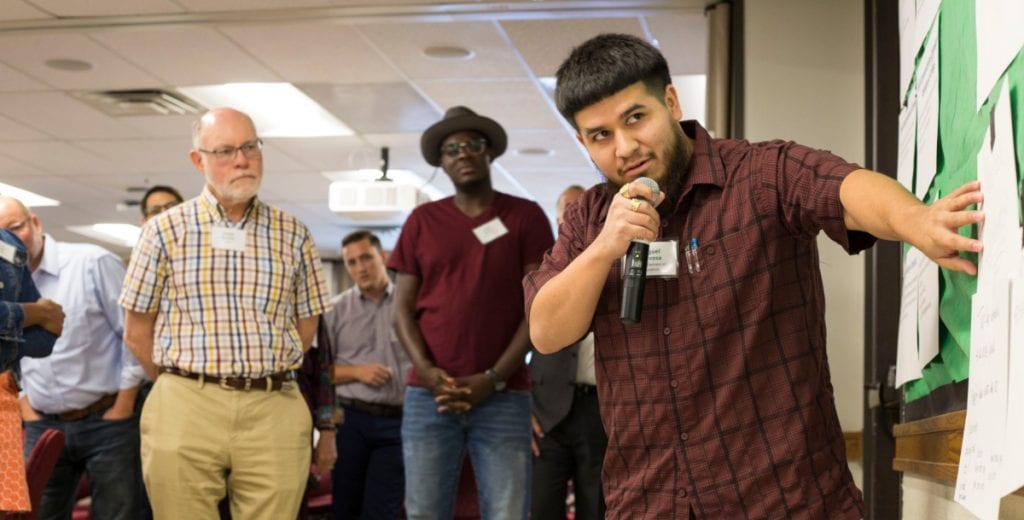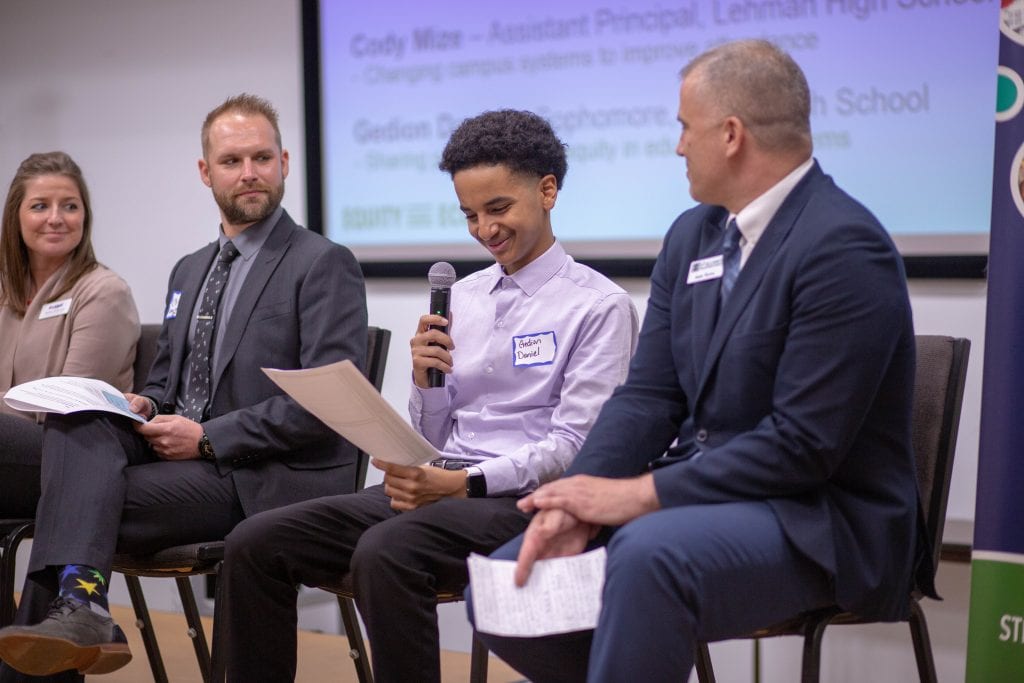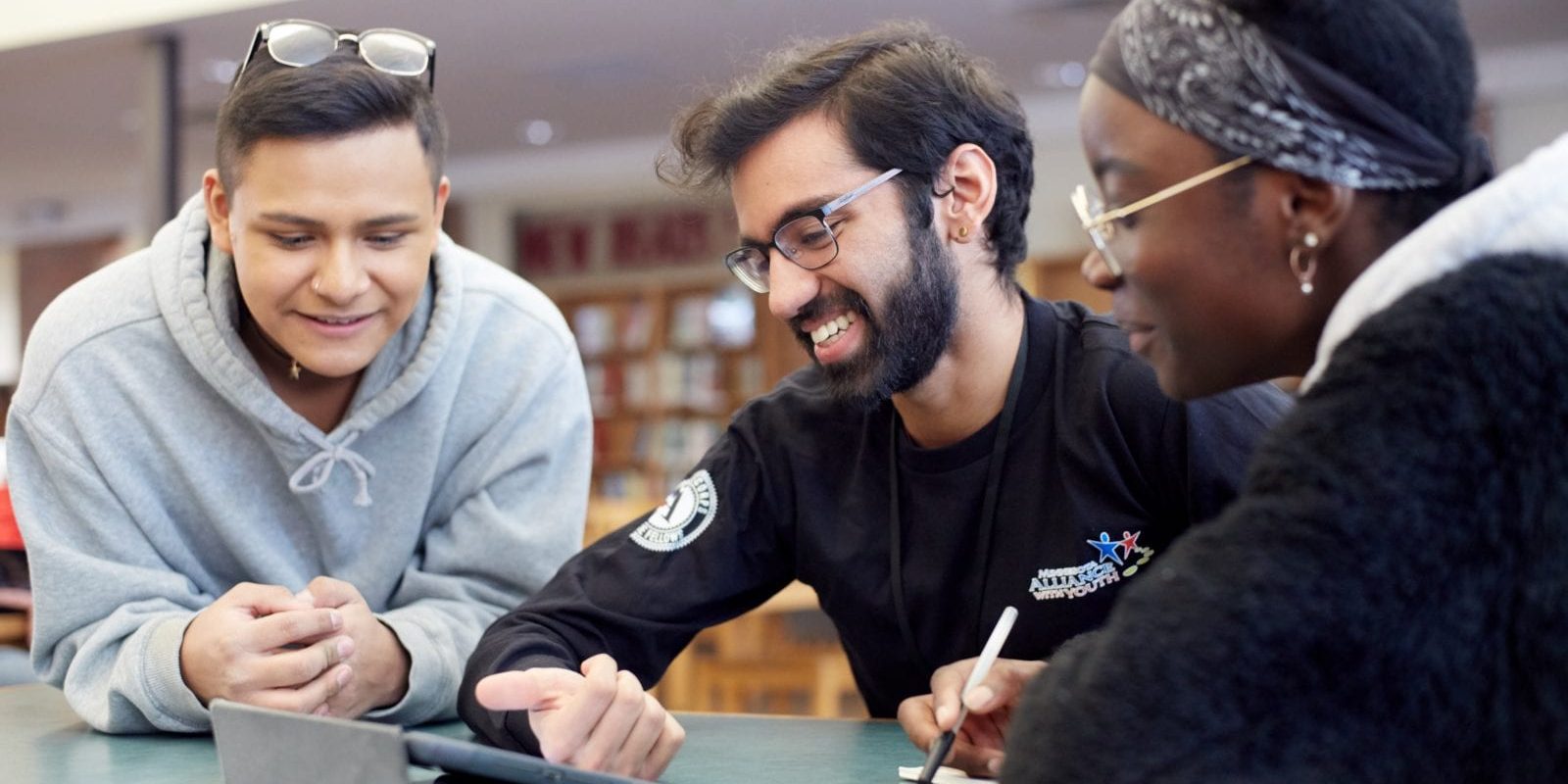One year ago, we saw the beginnings of systemic disruptions sparked by the COVID-19 pandemic and the convergence of health, racial and economic crises that heightened public awareness of structural racism. The Cradle to Career Network rose to the challenge of meeting immediate needs as they pursued efforts to transform systems, close opportunity gaps and advance more equitable outcomes.
At StriveTogether, our goal is to achieve population-level results, cradle to career. We define systems transformation as a fundamental and institutionalized shift in policies, practices, resources and power structures so that Black, Indigenous, Latinx and Asian youth and families and those experiencing poverty can thrive. In this four-part blog series, I’m sharing how systems transformation leads to equitable results, with examples of what it looks like to shift policies, practices, resources and power. My insights are culled from our 2020 Civic Infrastructure Assessment — a self-assessment completed by all 66 Cradle to Career Network members that gathered rich data on partnership progress toward systems transformation.
The path to systems transformation can seem daunting. To create lasting change, communities need to secure sustainable gains in outcomes through shifts in policies, resources and power. Though this vision is long term, everyday actions and decisions have a big impact. That’s why communities often start their systems transformation work with a focus on shifting practices.
When network members organize local partners around shared regional goals, the first step is to dig into disaggregated data — to uncover what conditions have led to current inequities. Using StriveTogether’s collaborative improvement methodology, communities then work to identity and test strategies grounded in data and community experience, adapt and adjust strategies, and ultimately work toward implementation at greater scope and scale.
Although many sources of population-level data were halted by the pandemic, cradle-to-career partnerships continued to support partners to use available data to shift practices to improve outcomes for Black, Indigenous, Latinx and Asian youth and families and those experiencing poverty. This work includes:
- Using data to highlight equity gaps and coordinate resources;
- Aligning local partners to reduce the duplication of relief and recovery efforts and provide real-time supports for youth and families; and
- Using collaborative improvement to improve prenatal to age 5, K-12 and postsecondary indicators and outcomes.

Here’s how shifting practices looks in communities across the StriveTogether Cradle to Career Network:
- ImpactTulsa is seen as a data expert in the Tulsa, Okla. community. The team’s Child Equity Index helps partners better understand the landscape of opportunity and access throughout the city. To build on this work, ImpactTulsa created internet access maps by census tracts. These maps revealed significant disparities in internet access in low-income communities and communities of color. Having this information enabled local school districts to adjust their remote learning strategies to make education accessible to all students. At the same time, ImpactTulsa, the City of Tulsa and Tulsa Public Schools used this data to advocate for longer-term solutions to address systemic inequities in internet access through the creation of the Internet Access Task Force.
- In Northfield, Minn., Northfield Promise convened a Racial Equity Team to create a more equitable and inclusive learning environment for students of color. The group made huge strides in their first year: revising social studies curriculum to be more culturally responsive; expanding the translation of daily school materials; adding bilingual staff to work with Spanish-speaking families to navigate remote learning; and using data to identify and address gaps in internet connectivity and food insecurity. Growing Up Healthy — a collaborative effort focused on improving conditions for Latinx, immigrant and refugee families — used Tableau to visualize barriers and challenges shared by Latinx families to inform partner strategies.
- In nearby Minneapolis/Saint Paul, Generation Next convened a Teacher Diversity Leadership Group to bring together key partners related to teacher preparation practices. The group’s work resulted in opportunities for collective action to increase the number of teachers of color and American Indian teachers.
 In 2020, StriveTogether and the Institute for Healthcare Improvement (IHI) worked together to identify ways to support Black, Latinx and students experiencing poverty in their transition from high school to postsecondary opportunities. IHI developed a framework, and seven StriveTogether communities used it to develop a plan and begin implementing postsecondary transition strategies. For example, E3 Alliance in Central Texas mobilized partners around a shared goal to increase postsecondary enrollment for male students experiencing poverty through virtual transition mentoring, campus supports, family engagement strategies and peer learning networks.
In 2020, StriveTogether and the Institute for Healthcare Improvement (IHI) worked together to identify ways to support Black, Latinx and students experiencing poverty in their transition from high school to postsecondary opportunities. IHI developed a framework, and seven StriveTogether communities used it to develop a plan and begin implementing postsecondary transition strategies. For example, E3 Alliance in Central Texas mobilized partners around a shared goal to increase postsecondary enrollment for male students experiencing poverty through virtual transition mentoring, campus supports, family engagement strategies and peer learning networks.
These communities are proving that practice change is a necessary component of systems transformation. As partnerships continue to shift practices in their work to change systems and advance more equitable outcomes, we’ll continue to lift up these examples.
Read part one in this blog series, focused on shifting policies >>
Read part three in this blog series, focused on shifting resources >>
Read part four in this blog series, focused on shifting power >>






